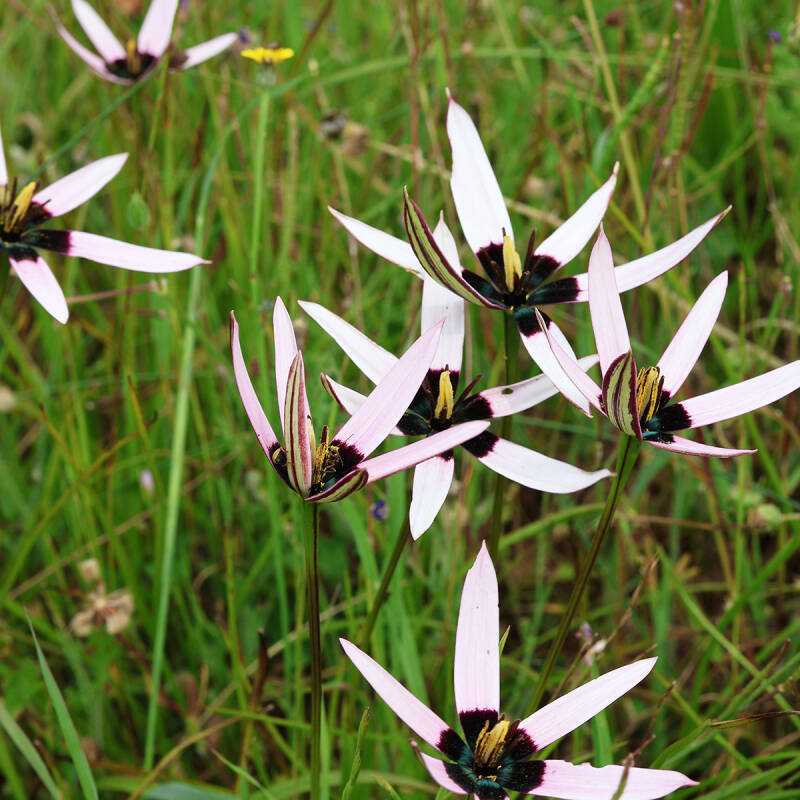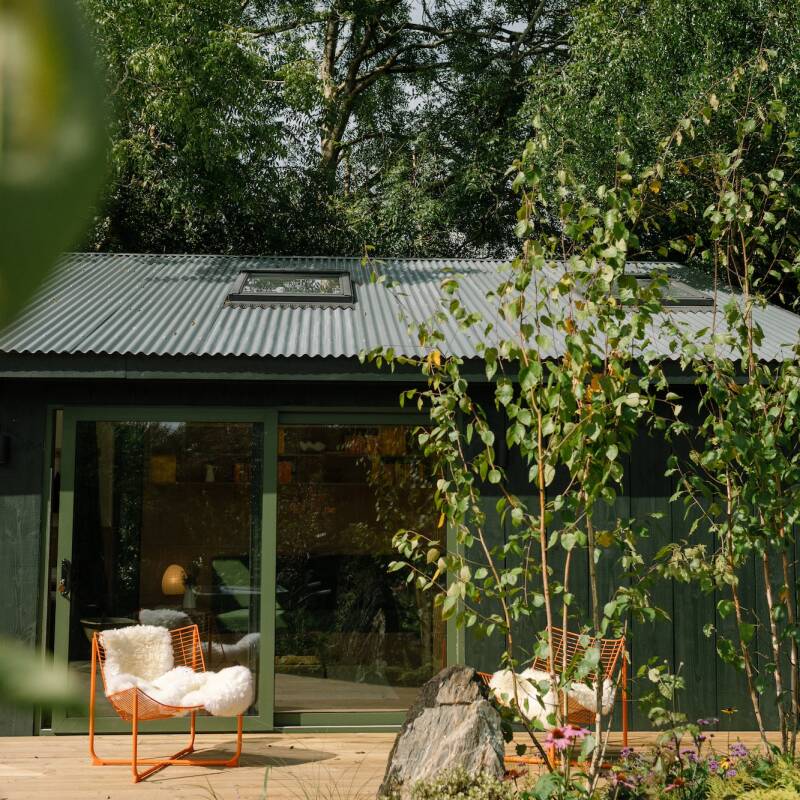After you’ve visited Cécile’s garden in Paris, you’ll leave with an absolute desire to reinvent your own life and slow down its pace. Splitting their time between a house in the Drí´me and this one in Paris, Cécile Daladier and husband Nicolas Soulier seem to live in that way that we all try to, with a deep appreciation for every moment in life.
A vibrant and congenial person, Cécile will describe a single flower to you as if you’ve never seen it before. Maybe it’s a violet stem or just the leaf from a Lily of the Valley. Either way, she’s right: you haven’t seen it before, or not like this anyway. You’ll start to question why you don’t always stop and appreciate the smallest flower’s beauty.
At Cécile and Nicolas’ home, you can’t separate the house from the atelier or the atelier from the garden; and while they all exist on their own levels, each area of the property reflects another. During a recent visit, I passed from the atelier into the garden, back and forth, many times during a conversation as Cécile collected flowers for her vases. She described, in depth, the process of her ceramics, the stillness of the country, and the open flame required for raku firing.
Photography by Natalie Weiss for Gardenista (except where noted); styling by Alexa Hotz.
Above: Two glazed ceramic pieces on a low table sit quietly right in the middle of it all.
Above: A miniature Capteaur collects water from the spring rains in Paris.

Above: Zinc window boxes and mirrors against the wall of the house are rich with botanicals; their back mirrors give each plant more space to exist and reflect out into the garden.
Above: Hand formed ceramics meant for soil, not water, and for cultivating miniature gardens.
Above: Jasmine vines surround the garden gates and atelier windows.
Above: A door, designed by Nicolas, opens into the foyer and atelier.
Above: Having always been an artist, Cécile began as a painter, and after throwing pottery on the wheel in her studio she learned hand formed rakuware in southeastern France. Her mentor was a German woman, Tina, who values perfectionism and solitude and lives at the base of the mountain where the couple also live in the Drí´me. For two years, Cécile would visit Tina in an attempt to learn from her style of raku. When she finally relented, Tina and Cécile began a relationship of mentor and mentee that has now evolved into a working friendship.
Above: Cécile’s own pieces begin with the clay derived from the earth in the Drí´me. It is mixed in an industrial bread mixer and hand formed, taking the shape of the vase. When firing each piece over the open flame, one must be completely covered in a rubber bodysuit and mask for protection and wood must be added constantly to keep the fire burning strong. Extracting the pottery at peak temperature, the pieces still glow red from the inside with heat.

Above: The oxidation-reduction process in rakuware is what gives a variation in color. This is done by creating a closed atmosphere within a container that pulls the oxygen from the clay. As Cécile’s pieces are without traditional glaze, the color within the clay itself is brought to the surface–so the finish on each vase is completely dependent on the minerals and variation of the soil in the Drí´me.

Above: As a political statement, Cécile has decorated a found tree branch with pieces of plastic–pieces that are either seen as trash or plastic used to protect trees or the restoration of ecosystems in the city of Paris.

Above: “The message is beautiful but it reminds you of the health of trees and the fragility of the environment in urban areas.”
Above: Collaborative work with Nicolas under Assaí¯, Cécile describes an installation at a school of clowning where the red window boxes, made of zinc, symbolized the red noses worn by clowns. Photograph by Alexa Hotz for Gardenista.

Above: The capacious atelier with minimal furnishing. Two studio tables, three Capteurs, and a sculptor’s stand. On the stand, a large vase full of tulip magnolias that were a gift from a woman selling vegetables in the Drí´me.

Above: A garland made from wire and fabric scraps collected over the years.

Above: Similar to the Capteurs that the couple has designed, meant to capture water and reflect the sky, the ceramic vases do the same in the right light. “It’s magic,” says Cécile: “you don’t need mirrored glass; it’s too strong. The light is the only mirror you need, an instrument for viewing the sky.”
When we first discovered Cécile and Nicolas’ work, we wrote about them in A Ceramicist and an Architect in Paris and Flower Arranging a la Parisienne.



















Have a Question or Comment About This Post?
Join the conversation